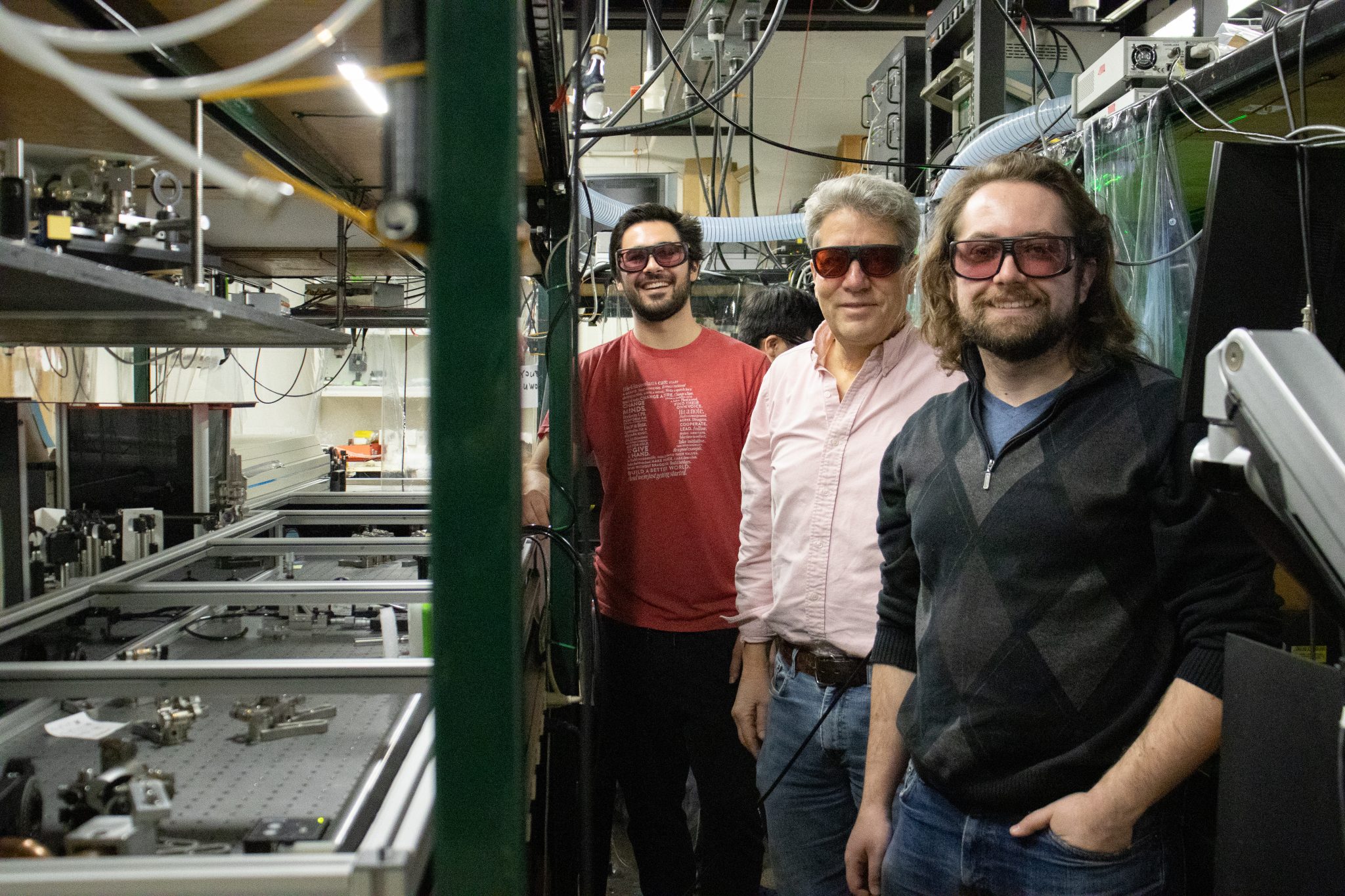One night in 2021, about six researchers from the University of Maryland Laboratory for Intense Laser Matter Interactions were preparing for an experiment.
The team took safety precautions very seriously — lab members plastered the walls of the hallway near the lab in the Energy Research Facility with warning signs not to come near, and the ends of the hallway were blocked off using caution tape and black curtains. They sent out an email earlier that day, so any stragglers cooped up in neighboring labs would clear out.
One person wheeled an optical table into the hall, ready to relay a laser shining through a hole in the lab wall down the record-breaking 45-meter distance. The scientists, wearing laser goggles, began their work.
Members of Dr. Howard Milchberg’s lab created a laser that could act as an air waveguide — a temporary guide for a laser over a long distance. The research was accepted for publication in Physical Review X and highlighted in Science News in January for the incredible distance the waveguide was sustained.
“What we’re doing is we’re shaping the air into these temporary fiber optic cables by changing air density,” said Andrew Goffin, a research assistant in Milchberg’s lab, electrical and computer engineering doctoral student and author of the waveguide project paper.
The laser — shaped like a donut — breaks up into filaments that create hotspots and precisely heat the air. This causes the air molecules to move faster and the air density to decrease — the difference in density where the air was hit by the donut and inside the donut forms the waveguide.
[Foal born ‘out of the blue’ at UMD farm]
The waveguide is similar to a fiber optic cable used for internet or communication, only instead of a physical tube guiding the laser, it’s a ring of low density air directing the laser’s path, according to Goffin and Milchberg, a professor in the university’s physics and electrical and computer engineering departments.
“Donut beams are understood at much lower intensity. It took some innovation to make a high-intensity donut beam,” Milchberg said. “The other thing with a donut beam is it would have to be super smooth. Had it been lopsided, the whole thing wouldn’t have worked very well.”
The donut isn’t one continuous laser — it’s pulsed in 50 femtosecond bursts every 100 milliseconds. For reference, that’s like a stack of flat, high-energy donuts thinner than a human hair.
The lab produced this laser with a 10 terawatt machine that focused the laser through a crystal, according to research assistant and physics graduate student Andrew Tartaro, who is also another author of the waveguide paper.
“There’s much higher energy things in life than lasers, but the fact that it’s compressed into such a short pulse, it’s a burst of energy … that’s really high intensity,” Tartaro said.
The lab ran two experiments with this laser: once inside the laboratory across eight meters for proof of concept and once in a hallway at 42 meters. The laser lasted for 20 milliseconds each time it was fired, Goffin said.
[Buzzing returns to UMD after summer storm took out bee hives]
The waveguide has several interesting possible applications, according to Milchberg and Goffin. This technology could be used for long-range communication to places where optical fibers can’t be installed such as planes, boats and even satellites.
The waveguide could also be used to detect pollutants based on the unique light pattern of particles that pollutant released, Goffin said.
Similar to how the laser would detect pollutants, the waveguide could also be used to detect radioactive materials at a distance. Stefan Waczynski, an electrical engineering doctoral student, and Anthony Zingale, a postdoctoral researcher at Milchberg’s lab, are working alongside the waveguide project to create a laser for the same purpose.
Currently, there aren’t immediate plans for the projects to cross over, but Waczynski and Zingale are interested in the waveguide as a potential option to extend the range of their radioactive detection laser.
The next step for the laser waveguide project is producing it at an even greater distance — about a kilometer. This would require a bigger laser, according to Goffin.
“As you scale up the energy … it just necessarily takes more space,” Goffin said. “Things get hotter, things break easier, so we probably have to go somewhere else to use a facility laser to generate these types of waveguides.”
CORRECTION: A previous version of this story misstated the role of a waveguide. The story also misstated the pulsing frequency of a donut beam. This story has been updated.



